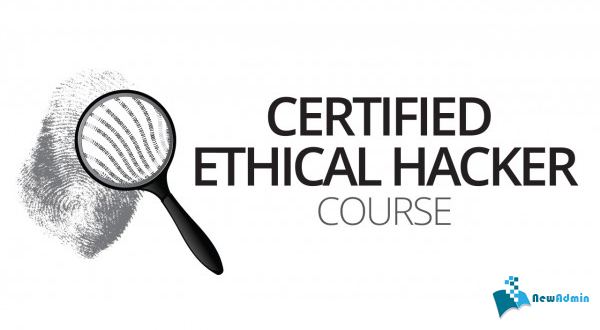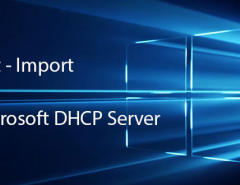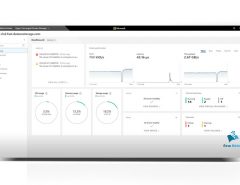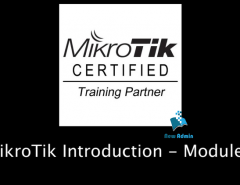یکی از معروف ترین و کاربردی ترین مدارک امنیت، مدرک CEH یا مدرک تخصصی هکر های قانونمند است. مدرک CEH، مدرکی امنیتی به منظور ارزیابی مهارت افراد در برقراری امنیت سیستم ها، و شبکه های سازمانی و نیز کمک به آنها جهت مقابله با حملات و نفوذ های هکرها است.
تست نفوذ یا هک اخلاقی یکی از روشهای ارزیابی امنیت شبکه و شناسایی آسیبپذیریهای آن است. در تست نفوذ با شبیهسازی یک حملهی واقعی، شبکهی تحت آزمون با هدف یفتن روشهایی برای نفوذ، تخریب و سوء استفاده از منابع پویش میشود. این نوع تست که از کاملترین روشهای ارزیابی شبکه محسوب میشود، سعی میکند کلیهی گزینههای ممکن برای نفوذ به شبکه را مورد ارزیابی قرار دهد و حداکثر نقاط ضعف قابل کشف را در سیستم بیابد.
در دوره دانلود ( Certified Ethical Hacker (CEH افراد با تکنیک ها و روش های هک و نیز چک لیست های امنیتی آشنا شده و قادر به بررسی وضعیت امنیتی سیستم ها و شبکه ها خواهند بود تا نقاط ضعف آنها را شناسایی و برطرف سازند.این بار بسته آموزشی از شرکت ITUonline را برای شما همراهان عزیز به اشتراک میگذاریم .
مطالب ارائه شده دراین آموزش
Module 1: Intro
1.1 Intro- Part 1
1.2 Intro- Part 2
1.3 Intro- Part 3
1.4 Intro- Part 4
1.5 Intro- Part 5
1.6 Intro- Part 6
1.7 Intro- Part 7
1.8 Intro- Part 8
1.9 Intro- Part 9
1.10 Intro- Part 10
1.11 Pretest- Intro
1.12 Questions
1.13 Pretest- Summary
1.14 Intro To Ethical Hacking- Part 1
1.15 Intro To Ethical Hacking- Part 2
1.16 Intro To Ethical Hacking- Part 3
1.17 Intro To Ethical Hacking- Part 4
1.18 Intro To Ethical Hacking- Part 5
1.19 Intro To Ethical Hacking- Part 6
1.20 Intro To Ethical Hacking- Part 7
1.21 Intro To Ethical Hacking- Part 8
1.22 Intro To Ethical Hacking- Part 9
Module 2: Footprinting & Reconnaissance
2.1 Footprinting And Reconnaissance- Part 1
2.2 Footprinting And Reconnaissance- Part 2
2.3 Footprinting And Reconnaissance- Part 3
2.4 Footprinting And Reconnaissance- Part 4
2.5 Footprinting And Reconnaissance- Part 5
2.6 Footprinting And Reconnaissance- Part 6
2.7 Footprinting And Reconnaissance- Part 7
2.8 Footprinting And Reconnaissance- Part 8
2.9 Footprinting And Reconnaissance- Part 9
Module 3: Scanning Networks
3.1 Scanning Networks- Part 1
3.2 Scanning Networks- Part 2
3.3 Scanning Networks- Part 3
3.4 Scanning Networks- Part 4
Module 4: Enumeration
4.1 Enumeration- Part 1
4.2 Enumeration- Part 2
4.3 Enumeration- Part 3
4.4 Enumeration- Part 4
4.5 Enumeration- Part 5
Module 5: System Hacking
5.1 System Hacking- Part 1
5.2 System Hacking- Part 2
5.3 System Hacking- Part 3
5.4 System Hacking- Part 4
5.5 System Hacking- Part 5
Module 6: Trojans & Backdoors
6.1 Trojans And Backdoors- Part 1
6.2 Trojans And Backdoors- Part 2
6.3 Trojans And Backdoors- Part 3
Module 7: Viruses & Worms
7.1 Viruses And Worms- Part 1
7.2 Viruses And Worms- Part 2
7.3 Viruses And Worms- Part 3
7.4 Viruses And Worms- Part 4
7.5 Viruses And Worms- Part 5
7.6 Viruses And Worms- Part 6
Module 8: Denial of Service
8.1 Denial Of Service- Part 1
8.2 Denial Of Service- Part 2
8.3 Denial Of Service- Part 3
8.4 Denial Of Service- Part 4
Module 9: Social Engineering
9.1 Social Engineering – Part 1
9.2 Social Engineering – Part 2
9.3 Social Engineering – Part 3
9.4 Social Engineering – Part 4
Module 10: Snffers
10.1 Snffers – Part 1
10.2 Snffers – Part 2
10.3 Snffers – Part 3
10.4 Snffers – Part 4
10.5 Snffers – Part 5
10.6 Snffers – Part 6
Module 11: Session Hijacking
11.1 Session Hijacking – Part 1
11.2 Session Hijacking – Part 2
11.3 Session Hijacking – Part 3
11.4 Session Hijacking – Part 4
11.5 Session Hijacking – Part 5
11.6 Session Hijacking – Part 6
11.7 Session Hijacking – Part 7
Module 12: Hacking Web Servers
12.1 Hacking Web Servers – Part 1
12.2 Hacking Web Servers – Part 2
12.3 Hacking Web Servers – Part 3
12.4 Hacking Web Servers – Part 4
12.5 Hacking Web Servers – Part 5
Module 13: Web Application Vulnerabilities
13.1 Web Application Vulnerabilities – Part 1
13.2 Web Application Vulnerabilities – Part 2
13.3 Web Application Vulnerabilities – Part 3
13.4 Web Application Vulnerabilities – Part 4
Module 14: SQL Injection
14.1 SQL Injection – Part 1
14.2 SQL Injection – Part 2
14.3 SQL Injection – Part 3
Module 15: Hacking Wireless Networks
15.1 Hacking Wireless Networks – Part 1
15.2 Hacking Wireless Networks – Part 2
15.3 Hacking Wireless Networks – Part 3
15.4 Hacking Wireless Networks – Part 4
15.5 Hacking Wireless Networks – Part 5
Module 16: Evading IDS, Firewalls & Honeypots
16.1 Evading IDS, Firewalls & Honeypots – Part 1
16.2 Evading IDS, Firewalls & Honeypots – Part 2
16.3 Evading IDS, Firewalls & Honeypots – Part 3
Module 17: Buffer Overflows
17.1 Buffer Overflows – Part 1
17.2 Buffer Overflows – Part 2
17.3 Buffer Overflows – Part 3
17.4 Buffer Overflows – Part 4
15.5 Buffer Overflows – Part 5
Module 18: Cryptography & Steganography
18.1 Cryptography & Steganography – Part 1
18.2 Cryptography & Steganography – Part 2
18.3 Cryptography & Steganography – Part 3
18.4 Cryptography & Steganography – Part 4
18.5 Cryptography & Steganography – Part 5
18.6 Cryptography & Steganography – Part 6
18.7 Cryptography & Steganography – Part 7
Module 19: Metasploit for Penertration Testing
19.1 Metasploit for Penertration Testing – Part 1
19.2 Metasploit for Penertration Testing – Part 2
19.3 Metasploit for Penertration Testing – Part 3
19.4 Metasploit for Penertration Testing – Part 4
19.5 Metasploit for Penertration Testing – Part 5
19.6 Metasploit for Penertration Testing – Part 6
19.7 Metasploit for Penertration Testing – Part 7
19.8 Business Process – Part 1
19.9 Business Process – Part 2
19.10 Business Process – Part 3
19.11 Business Process – Part 4
19.12 Business Process – Part 5
19.13 Business Process – Part 6
19.14 Lab Suggestions
Pass : newadmin.ir





پاسخ دهید